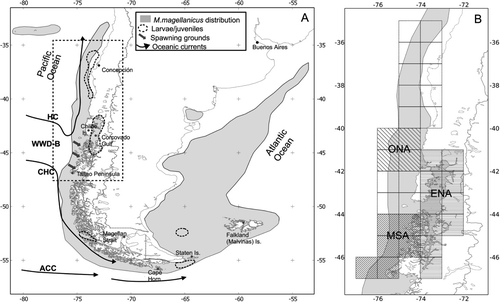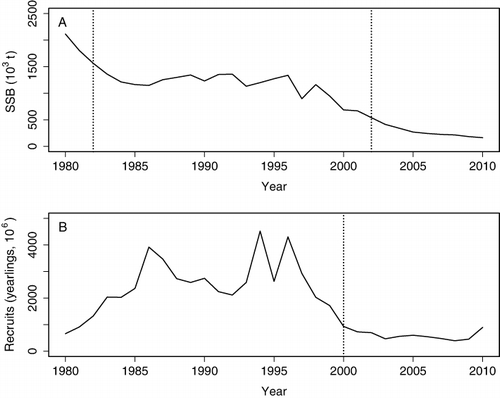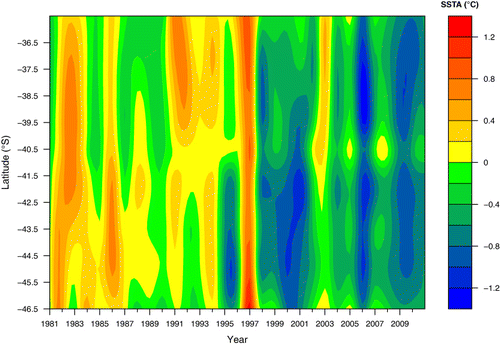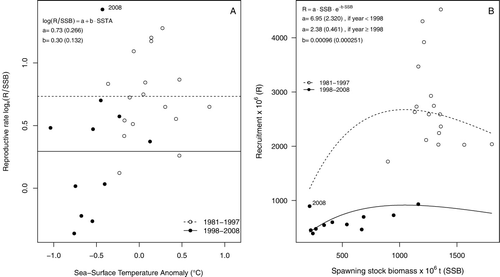Figures & data



Table 1 Detection of shifts in sea-surface temperature anomaly (SSTA), latitudinal position of the west wind drift bifurcation (WWDL), southern oscillation index (SOI), spawning stock biomass (SSB) and recruitment time series (1981–2010).

